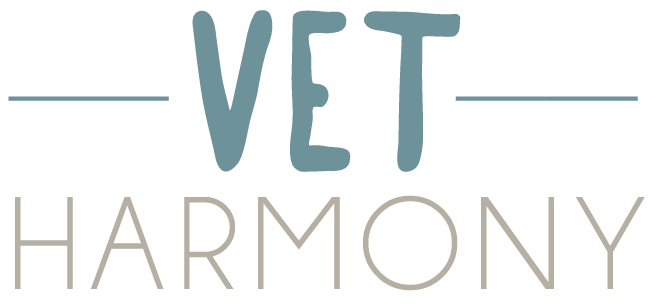One of the most common challenges I hear from my coaching clients who are looking to make changes in their life or career is around their ability to stay present.
They find that they are thinking about work all the time and struggling to switch off, even when with their children, partner or self in the evenings.
The reverse can also be true – while at work there can be a sense of ‘just trying to make it through the day’ and get to the point when you can go home, rather than taking pleasure in the job, particularly since Covid and the worsening of veterinary staff shortages.
Often we may be physically present in a location but our mind is way off somewhere else, ruminating about work, worrying about the future, reliving past events or just wishing you were somewhere else.
Our human conscious thinking mind is an amazing thing.
It’s what has allowed us to evolve beyond all other species and to create amazing things.
However, it is also not ALL of who we are, our mind is just a part.
I disagree with Descartes and his statement that “I think, therefore I am”.
I also believe that in addition to this, “I feel therefore I am.”
“I have presence (i.e. being rather than doing), there for I am.”
We also have a body and, I personally believe, a soul as well – or at the very least a quiet still ‘observer’ within that is separate to our thinking mind and that is the essence of who we truly are.
Our inability to be present and fully immersed and engaged in the present moment of ‘now’ can often be the cause of stress and adds to how tired we feel, as well as affecting our relationships with those closest to us.
This can be heightened during times in your life where you ARE looking to make changes, or as is the case for us collectively at the moment that once again serious and upsetting world events are at the forefront of our news and social media.

When you feel at a bit of a crossroads in your career, or you’re not sure if you’re at a crossroads but you’re not that happy and would love some changes, it takes courage to stick with the discomfort and uncertainty that often comes up.
Our nervous system gets triggered as we navigate the reflective processes, the ‘what ifs’ and working out how to make decisions which is often why we procrastinate or numb ourselves when we get those feelings.
Scary or traumatic events in the news where we feel powerless to effect big changes have the same effect on our nervous system.
So I want to share with you today six different methods you can use at times like these to help you ground and centre yourself.
To help you calm your nervous systems’ response and dissipate the uncomfortable feelings rather than numb or ignore them, allowing you to stay present and focused.
They also work when you recognise that you’re having trouble switching off and are not taking time to appreciate and experience the present moment with either your own self-care or with people you love.
Six techniques to bring you back to the present moment
1. Grounding
Grounding techniques are proven to help with anxiety, PTSD and managing our emotions and there are lots of techniques out there.
 My personal favourite is literally to get outside with my bare feet and onto some grass or earth, even in the winter when it’s very wet and cold although it might only be for 1 minute if it’s freezing!
My personal favourite is literally to get outside with my bare feet and onto some grass or earth, even in the winter when it’s very wet and cold although it might only be for 1 minute if it’s freezing!
The evidence-base behind this has to do with earthing and grounding physics in that electrical charges from the earth can have positive effects on the body.
For me, that physical sensation on the soles of my feet also brings my awareness away from my racing monkey-mind and back into my physical body.
Many other grounding techniques for mental health use the same principle – for example the body scan in mindfulness where you take your awareness to different parts of the body.
Breathing techniques that involve counting do the same, with the added benefit of the rhythmic breathing switching on your parasympathetic nervous system and creating better heart coherence.
However, for some people breathing exercises can feel almost anxiety-causing rather than relaxing unless you’ve practiced it a while, and so grounding with your bare feet can be a useful alternative.
While I’m standing on the ground, I will focus on my breathing but not trying to control it, simply following my breath and on each out breath, I imagine sending any stress or big emotions or negativity down through my legs, out of the soles of my feet where it can be absorbed by the earth.
When the Ukraine crisis started, I was needing to nip outside to do this several times a day and it really helped.
2. Come back into your body
This is a nifty technique one of my coaches passed onto me, for when you recognise that you’re all up in your head, overthinking and not being present and you want to shift your state.
Sit somewhere for a minute, close your eyes if it helps and visualise a mini-version of yourself up in your mind, like a stick figure.
Imagine you ARE that mini-version of you up in your head, so you’re looking out from that perspective, and then visualise yourself moving down your neck as if in a lift, and back into your body again, and feel yourself filling up your body and then looking out from behind your actual eyes and feeling yourself occupying your whole body with your awareness.
Take a couple of calming breaths and carry on with your day from that place of mind-body integration.
Repeat as often as needed throughout the day.
3. Manage your Chimp
Many of you will be familiar with Prof Stephen Peters’ brilliant book, The Chimp Paradox but for anyone who hasn’t come across it and the chimp analogy, your ‘chimp’ is the part of your brain that is mainly in the limbic system. It’s where your amygdala is that sends you into fight, flight or freeze and is that more primitive reptilian survival-based part of the brain.
Your chimp is the part of your brain prone to black-and-white thinking, catastrophising, excessive negative or anxious thinking, and it’s not always rational and often not seeing the bigger picture.
Our upper neo-cortex or as Prof Peters calls it, our ‘human’ mind, can help temper the chimp’s reactions during the day, but if you don’t work night shifts and have a normal circadian rhythm, then between about 11pm and 7am our neocortex powers down, leaving the chimp to rampage without logic, ration or reason there to help balance it.
This is why things often seem worse, or really catastrophic during the night but when we wake again in the morning, it all seems less threatening or more manageable.
If you have a Chimp attack, then a useful technique can be as follows:
- Grab a notebook or have one by the bed at night
- Jot down all the worries and fears your chimp is telling you, don’t hold back – get them all onto the paper no matter how many or how dramatic they sound
- Go back through and put a line through any worries where you have absolutely zero control or influence over what happens (unproductive worry)
- For all the remaining ones (productive worry) have a think of one action you could take, no matter how tiny, that would help you to find out more, or do something about it and then take that action or put it into your diary for during the week
If you’re doing this in the middle of the night, leave the last two bullet points for the morning, just having listened to your Chimp normally helps it to calm enough for you to sleep.
The secret to worry, is training yourself to identify and choose to let go of unproductive worry, and focus on productive worry and convert it to a specific action, no matter how small.
4. Lying down flat for 10 minutes

I appreciate this one may be hard to achieve at work so could be more for at home.
I’ve been learning much about our body’s electromagnetics and energy systems over recent years, and one way to have a mini hit-the-reset button is to lie down flat for just 10 minutes.
Pop a folded towel or jumper under the back of your head if needs be.
I often then head to the Insight Timer app and find a 10minute guided meditation so I know when the 10mins is up.
Micro-rests like this allow our body’s electromagnetic energy systems to settle down and ‘recalibrate’. The short burst of relaxation again aids in dialling down our fight and flight response and therefore cortisol production, while turning on the parasympathetic which has lasting knock-on effects for all our hormonal systems.
5. Journaling on where you may need better boundaries
If you find it hard to switch off, it can be helpful to journal – i.e. grab a notebook and just free-write – on when and where you have the most challenges with that.
Is it in the evenings making that transition from the working day to being with your partner, fur-babies or yourself in downtime mode?
Is it at weekends?
Do you work from home some days and struggle to separate the two?
Once you’ve pinpointed those areas, ask yourself what you need to do to help create better boundaries that will help you disconnect from one mode and become present in the other.
For example, if you’re always looking at your phone when you’re meant to be with your kids, could you leave the phone on charge in another room for 1 hour each evening while you spend time with them to remove temptation?
6. Find a physical symbol
This is a technique I learned from my Master Coach last year when completing my advanced intuitive coach training.
For some people, finding an object to use as a reminder whenever you see it to check in and become present to the current moment can be useful.
This could be a particular photo up on the wall at home, or a framed picture in a certain place at work. It could be a piece of jewellery – Brené Brown has a ring she wears that she twiddles on her finger whenever she needs to remember to be her authentic self.
I have a thumb ring that says “I am enough” that isn’t uncomfortable but I’m aware of the sensation when I’m wearing it (compared to my finger rings) and it reminds me every day to choose to remember that.
It could be an ornament or other object like a scarf or cushion.
It’s very easy for us, especially as highly cognitive, intellectual high-achieving veterinary professionals, to be always up in our head thinking away and not being present, so having a visual solid reminder can work really nicely for some people.
I hope these have been useful. You don’t need to do all of them! Pick one or two that resonate the most and have a play with them. The more we can start to train ourselves to come back into our bodies and present moment awareness, the stronger our intuition will become and our ability to tap into our own inner wisdom and guidance.
These are also great techniques for regulating your nervous system when something has triggered it so they could be useful after experiencing a difficult case at work, or going through the stress of a client complaint etc.
Working on mindset, stress and anxiety alongside the more practical strategic aspects of career decision-making is something I’m passionate about at Vet Harmony, so if you’d like a chat to see how I could potentially help you further, hop on a free 30-minute call with me using the link below – I’d love to say hello! 😀

